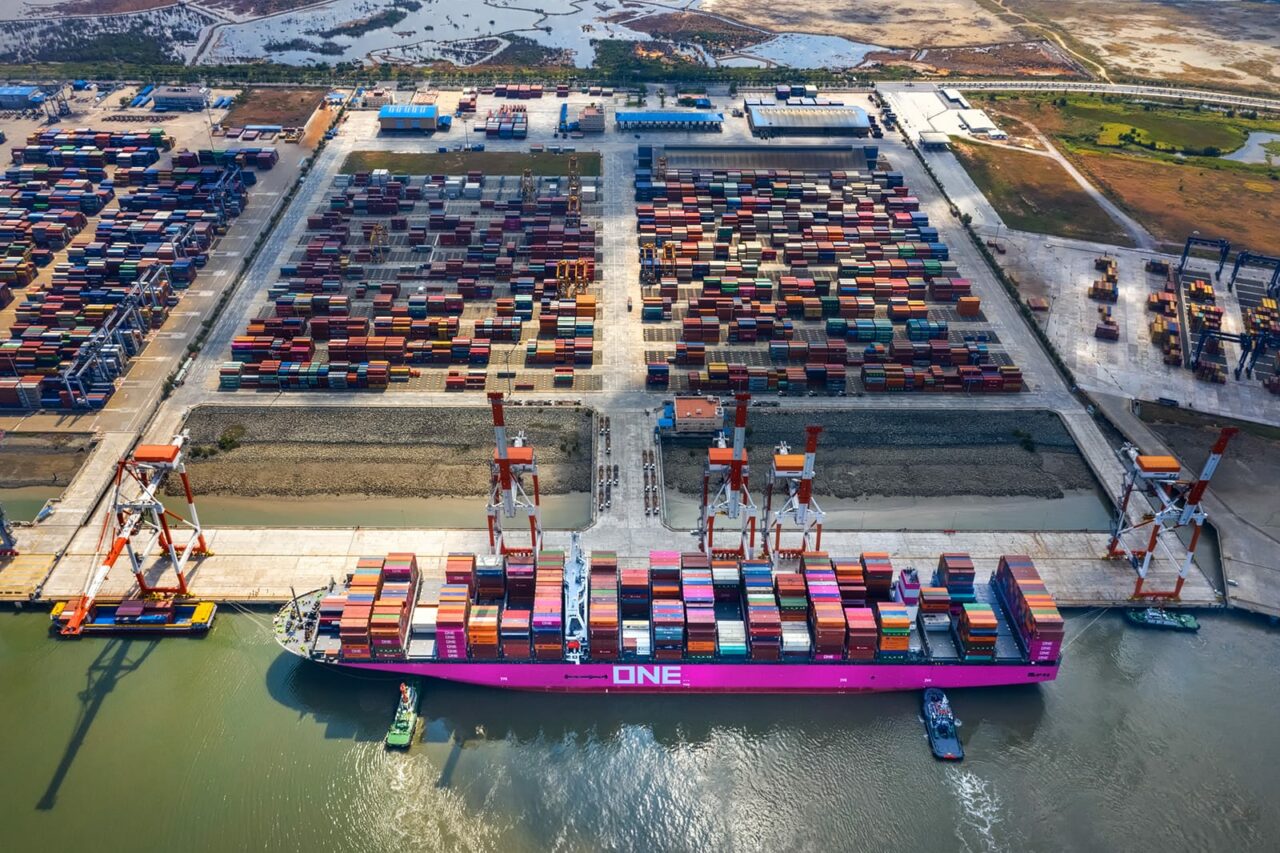
The national shipping crisis marked by scores of container ships waiting weeks to dock in Los Angeles looks like tremendous a opportunity for Florida’s 15 seaports — yet practical expansion expectations in the Sunshine State may be more modest than luring all those ships to Florida.
Long-term shipping business contracts, labor contracts, availability of seaport infrastructure such as super cranes, channel depths, warehouse and storage yard capacity, rail and highway connections, and shipping companies’ longstanding logistical habits and arrangements all could stifle hopes that JaxPort, PortMiami, or any other Florida port could steal away significant amounts of frustrated shipping business from California and elsewhere.
Gov. Ron DeSantis‘ proposed 2022 budget would allocate nearly $117.3 million to help Florida’s seaports better compete. That comes with a pledge to use the money to help double ports’ business to 8 million containers a year, from about 4 million statewide now.
“Obviously, we’re thrilled to see that amount of money,” said Florida Ports Council President Michael Rubin. “It’s in a DOT work program. The work program will have that in there now, which will help with a number of capacity projects.”
Rubin credited DeSantis for calling national attention to opportunities in Florida to help ease the shipping crisis clogging other ports.
“The supply chain crisis really gave us an opportunity to show the world that Florida is a place they can do business. We’ve got the capacity to handle more containers coming through our state,” Rubin said.
“We sit on two major trade lanes, the Gulf and the Atlantic. Our guys are working well together. We’ve got a system. Collectively, we’re as big as Savannah, Georgia,” Rubin added. “Our ports collectively, really, are over 4 million containers and we can double that amount. With some additional investments, obviously, we can do a little more. And Florida can be your first port of call coming out of the Panama Canal, and a good stop coming out of the Suez Canal.”
Yet for an industry as entrenched as shipping, Florida as an alternative to the status quo — even surrounded by sea and at the crossroads of North and South America — still can be a tough sell.
“It really is a mindset change you’re trying to do,” Rubin said. “There are multiyear contracts with some of these carriers and the shipping lines. They’ve been using the same damn shipping lane forever. They’re making beaucoup bucks, so it’s kind of hard to get them to change their minds. But if they continue to have this kind of delay — and it’s not going to get any better over on the West Coast — now’s the time to continue that discussion.”
For container shipments, JaxPort in Jacksonville, PortMiami, and Port Everglades in Fort Lauderdale all are among the America’s 25 busiest seaports. Yet none is anywhere close to being among the nation’s biggest.
According to the U.S. Department of Transportation’s most recent annual report to Congress, covering the year 2019, JaxPort, PortMiami and Port Everglades each handled more than 1 million TEU shipping units (a slightly different count from containers.) Several other Florida ports, such as Port of Palm Beach and Port Manatee, handled much smaller numbers, at less than 200,000 units.
Meanwhile, among the competition, the Port of Charleston and the Port of Virginia each handled about 2.5 million or more; the Port of Savannah handled more than 4.5 million; and the nation’s busiest ports, in New York, Long Beach, and Los Angeles, each handled between 7 and 10 million. Several other West Coast ports also were busier than any in Florida.
And there remains much more to do for Florida’s ports to keep pace with the nation’s biggest.
Florida ports’ wishlist for infrastructure improvements in its Florida Department of Transportation work program over the next few years is in the range of $3 billion, Rubin said.
That would be on top of significant investments made over the past few years, largely driven by federal grants, to dredge deeper ship channels; expand wharfs, piers, terminals, and storage; and add cranes and other infrastructure. PortMiami, for example, has invested more than $1 billion in the past decade or so for improvements, including deepening its channel and acquiring some “super post-Panamax gantry cranes” needed to handle the new class of huge cargo ships coming into service.
Florida’s hopes may rest with the $1 trillion federal infrastructure bill, which includes $32.3 billion for seaport infrastructure improvements across the country. However, specifics on how that money could become available, and for what, where, and when, are not yet clear.
“We continue to talk with DOT. We’re going to go together to look for some of those federal dollars that are out there as well. We need to get our fair share of that,” Rubin said.
There are related transportation issues that Florida’s seaports and the Department of Transportation also must address involving the railroad and highway infrastructure needed to support them, Rubin added.
“We’re hopeful that we can all work together and come up with a project list that the Governor and DOT can look at and say, ‘here’s some more projects we’d like to spend some money on,'” he said.



